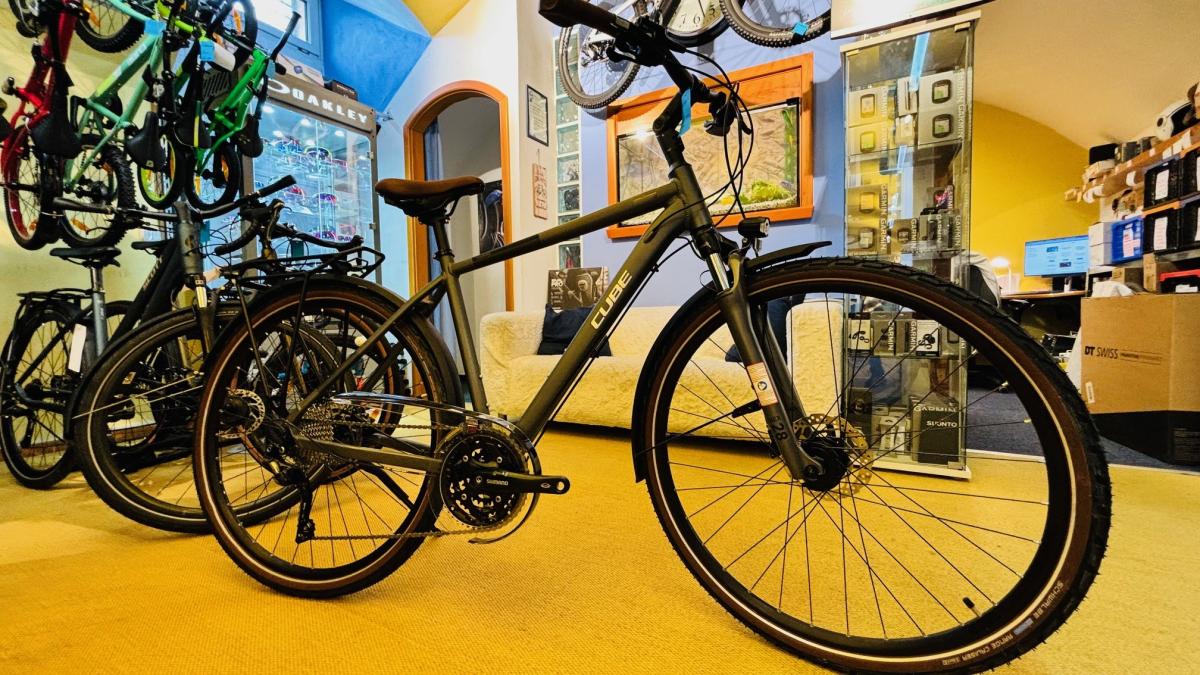It is no coincidence that the two categories are discussed together in the catalogs of many bicycle manufacturers and these bikes are listed under the cross/trekking menu item. In a very simplified and somewhat imprecise way, we could say that trekking bikes are cross bikes equipped for urban transport and long-distance hiking (or vice versa).
The wording is a bit imprecise, because trekking tires are mainly used for hard surfaces, but otherwise the wheel size, geometry, seat position and gear range are similar. The specification of cross bikes also assumes off-road touring, so the tires are chosen accordingly.
Cross bikes are more universal in the sense that you can hike and do sports in their saddle practically anywhere, the emphasis is on recreational cycling. Trekking bikes can also be used for hiking and are suitable for recreational sports, but due to the tires intended for asphalt and the many additional equipment, they move less comfortably on the terrain than cross bikes.
On the other hand, compared to cross machines, they can be used better in everyday life, since fenders, trunks, kickstands, lighting and other small things are usually equipped at the factory. Trekking is a bit more difficult due to the many accessories, but we can be sure that our pants won't get muddy if we get caught in the rain. We can simply attach a package to them, and dynamo lighting is never forgotten at home, just like flashing lights.
Trekking should therefore be purchased by those who value a lot of accessories during tours, or who use the bike a lot for daily transportation throughout the year, need mud protection and lighting. Trekking bikes are minimally more expensive than a similar cross machine, prices start at approximately HUF 150,000. On the other hand, if someone wants to buy the accessories separately for a cross bike, they will end up much worse off.
The trekking bikes are mostly built on a solid, durable aluminum frame, in women's and men's versions, with traditional straight or raised handlebars, with a lockable (lockable) telescope. The geometry gives a comfortable sitting position, and long-term cycling is also an experience. The wheel size is the most common, 622 mm rims, with 35-45 mm wide tires, with a pattern recommended mainly for asphalt, with which we also manage on bumpy dirt roads.
A high-quality brake system is essential for spare parts, and today this means hydraulic disc brakes. We often use a trekking bike in the rain, even on wet roads, so a safe stop is also important in these cases. In the shifting system, the components from Shimano's lower middle range and up work well together, what is more important is the drive.
The wide transmission range is necessary, since the climbs are more difficult with a heavier trekking bike than with a light road bike. And to overcome the mountain, fast gears are needed. The smallest sprocket of the triple plate gear is 24 or 26, a 36 rear sprocket is sufficient. At the same time, many people also like to go as fast as possible on longer, winding slopes, and the 48-11 gear ratio comes in handy for this.
Cheaper or more expensive trekking bikes are usually not distinguished by the frame (we are talking about 90% aluminum frames), but by the equipment. And this does not primarily mean the slightly better-quality telescopic fork or the 30-gram lighter rear derailleur, but the quality accessories, such as a top-of-the-range lighting system, design mudguards, a massive trunk that can be loaded with really heavy luggage, a gel saddle, and comfort grips. etc.
When buying a trekking bike, it is not enough to know what we want, the selected bike must fully fulfill its functions. With a trekking bike, it is of almost no importance whether a Deore or SLX derailleur is installed on it. XT is just marketing and "peasant blinding", but if, for example, your heel hits the trunk while turning, or the brake cable and lighting wires don't have a proper path, or the fender rattles after a week, then the expensive transmission has gone to hell...
In summary, a trekking bike is what you choose, just like you choose a car. Use it for commuting to work, for weekend trips, and for meaningful leisure time. A good trekking bike can even change our lifestyle in everyday life. When it comes to motorization, the most dynamically developing segment in cycling across Europe is the e-bike industry, among which electric assisted trekking takes the biggest slice of the cake.



